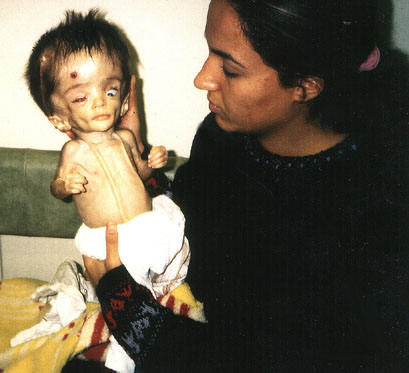Birth defects and cancer rates seem to have skyrocketed in Iraq in the last 15 years, and mounting evidence indicates that depleted uranium (DU) munitions could be responsible. DU is a radioactive and chemically toxic substance the U.S. military uses in armor-piercing weapons. DU burns upon impact, and if DU dust is inhaled or ingested or if there is exposure to DU fragments, radioactive material can be absorbed into skeletal tissue and organs. Depleted uranium is a genotoxic agent that has been linked to the development of cancer and other diseases and that may lead to increasing public health issues if genetic damage is passed on to children. The U.S. military exploded at least 440 metric tons of DU in Iraq (and maybe four times that) during its 1991 and 2003 invasions. Even as the Iraqi government still struggles with the toxic legacy of the use of DU in those wars, the U.S. recently delivered A-10 aircraft armed with DU to the Middle East for the U.S. bombing campaign against ISIS.
Increasing health problems are linked to contamination stemming from heavy use of DU in densely populated areas and subsequent exposure by people in surrounding communities to contaminated scrap metal sites. In Hawija, surveys indicate that one quarter of newborns are suffering from disabilities. Doctors at a maternity hospital in Basra reported a 60 percent rise in birth defects since 2003. The health crisis is so acute in Iraq that expectant parents live in fear of having a child born with defects. The U.S. government has yet to take any meaningful action to help address this health crisis or decontaminate affected areas.
(Read the rest of the story here…)
